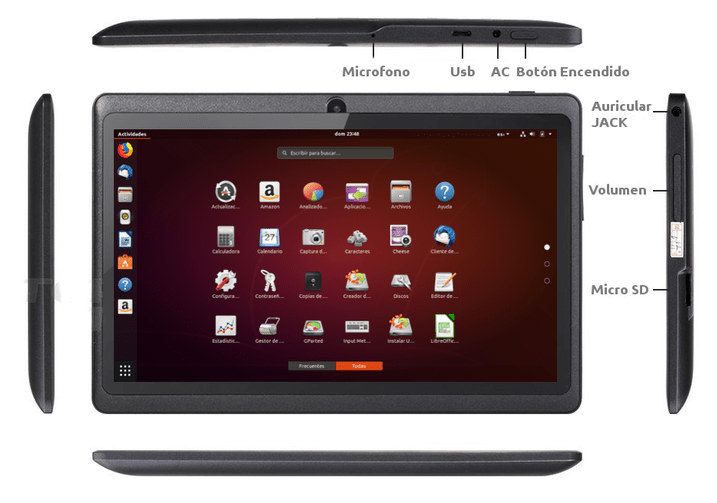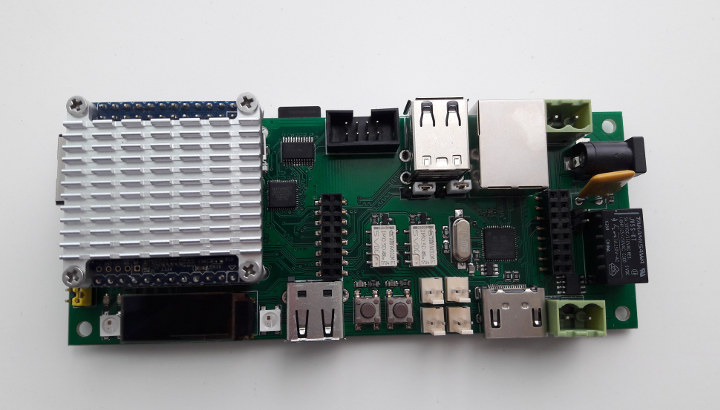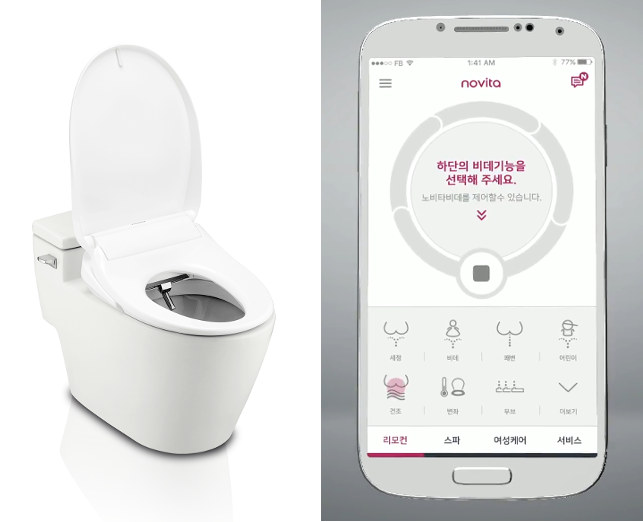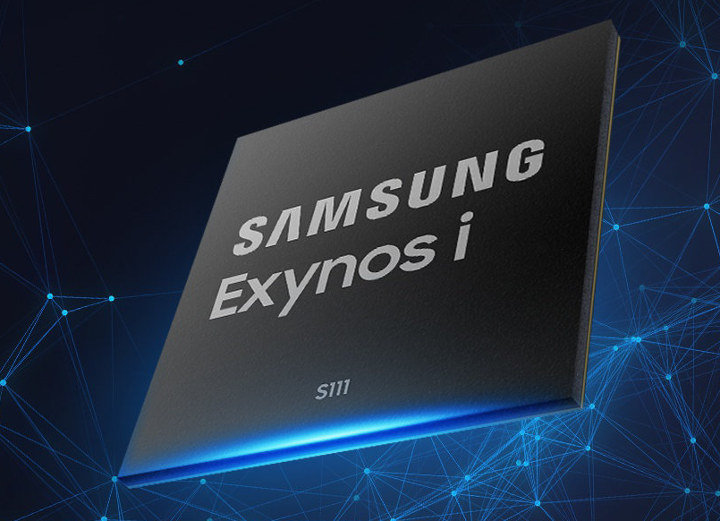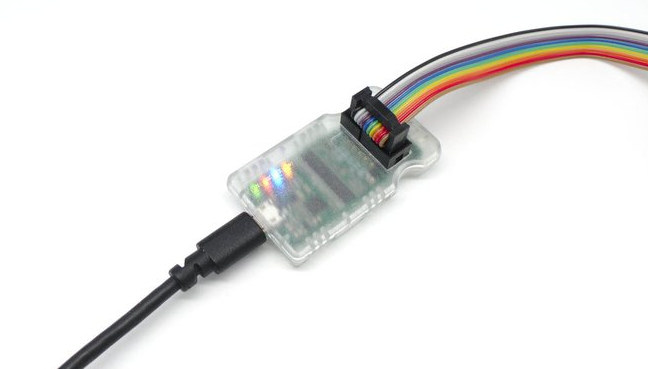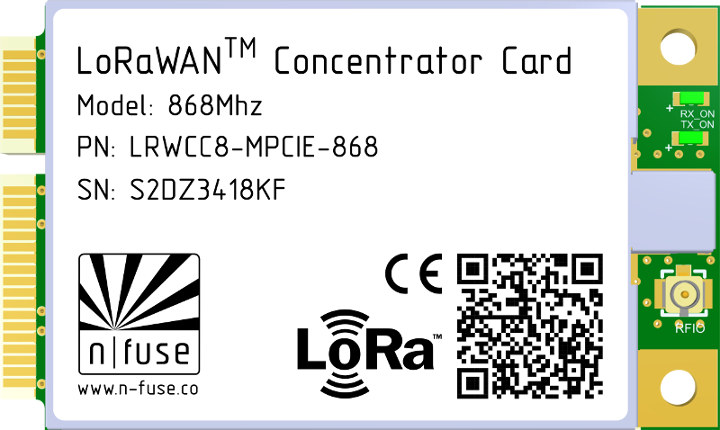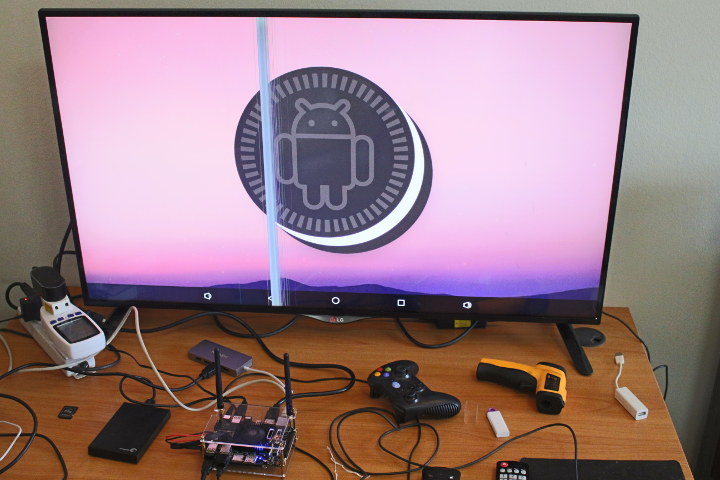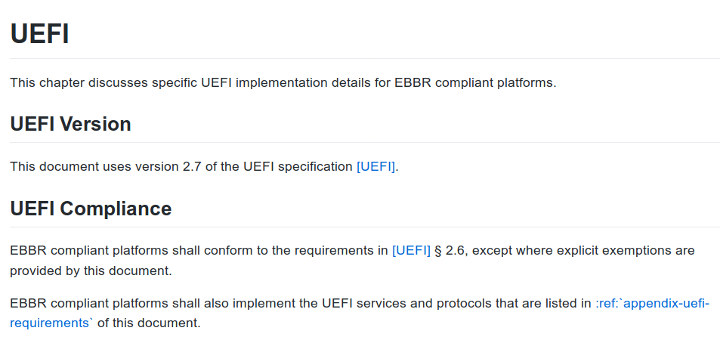If you want an Arm Linux laptop, you have already some choices with products such as Pine64 Pinebook, or Olimex TERES-I open source hardware laptop, but if instead you’d rather do without keyboard, and get an Arm Linux tablet, choices are much more limited, if any at all. Back in 2012, Allwinner A10 based PengPod 700 & 1000 tablets were available for the company has since folded, and this year, RasPad case launched to allow you to build your own thick tablet with a Raspberry Pi 3 (B+). However, if you want to normal looking tablet, your best option right now is to get an Android tablet and mess around to install Linux on it. That’s not for everyone, and the good news is that what looks like a proper – albeit low-end – Arm Linux tablet is coming to market soon with TableX. TableX preliminary hardware specifications: SoC – […]
MuxPi Board Relies on NanoPi NEO to Enable Remote Testing of Development Boards
Product development often occurs in different location over the world, there may be one team in Asia, and another in Europe and the US. At the beginning, the number of working samples for a board may be limited, so the project manager may have to decide who gets the boards since those may not be available to all teams. So it would be great if somehow there was a way to do remote testing of boards, so maybe the team in Asia could setup the testbed, used it during there time, and once they are back home, the US team can take over remotely to carry on their own development work on the hardware. That’s exactly what MuxPi board is all about. The solution provide remote access via the Ethernet port of a NanoPi NEO board, and connects to the DUT (Device under Test) via HDMI, Ethernet, USB and other […]
Kohler Novita “Therapy Bidet” Bluetooth LE Enabled Toilet Seat Works with Android & iOS Smartphones
If you’ve ever been to Japan, and to a lesser extend in Korea, you’ll probably have used one those toilet seat that sprays water, and ends with a gentle drying once you’re done with business. That’s all good, but you’d still need to press the buttons to activate it, and who knows what kind of germs may be on those buttons. But with Nordic Semi nRF52832 powered Kohler Novita “Therapy Bidet” (BD-TE80M) you don’t need to worry about third party germs, since it can be controlled over Bluetooth LE with your very own smartphone contaminated with your very own germs. The toilet seat bidet supports three different spray modes (active, silky, and mist) aka “water experiences”, as well as dual dry air blower combined with far infrared for “better skin care” and improved blood circulation. An auto-customization mode is available for ladies during the thing that normally happens every moon […]
Samsung Introduces Exynos i S111 NB-IoT Modem + GNSS Chip
Samsung has just announced their first NB-IoT solution with Exynos i S111 chipset with a single chip integrating an NB-IoT capable LTE modem, RF IC, an on-chip security sub-system, and a PUF (Physical Unclonable Function) security solution along with various components such as CPU, and SRAM. The chip apparently also integrates GNSS hardware with support for GPS, Galileo, etc… Exynos i S111 specifications: CPU – Arm Cortex-M7 @ 200MHz On-chip Memory – 512KB SRAM Modem – LTE Release 14 NB-IoT GNSS – GPS, Galileo, GLONASS, BeiDou Interfaces / Peripherals – USI, UART, I2C, GPIO, eSIM I/F, SDIO (Host), QSPI(Single/Dual/Quad IO mode), SMC Security – eFuse, AES, SHA-2, PKA, Secure Storage, Security Sub-System, PUF The chip is also said to features Samsung’s “advanced algorithms for wider coverage”. Many NB-IoT GPS trackers currently implement a two modules solution, so the latest Exynos chip should enable more compact designs. Samsung did not publish […]
μArt is a Universal USB to UART-TTL Adapter with Safety Features (Crowdfunding)
I’ve never had specific issues with USB to TTL debug boards personally, but potentially you could damage the target if you select one with the wrong voltage, and for more advanced use cases often do not include GPIOs. μArt USB to UART-TTL Adapter aims to solve those issue with wide voltage range (1.8 to 5.4V), safety features like galvanic isolation or over-current protection, and one header exposing I/Os. Key features: Universal TTL-UART – 1.8 – 5.4 V, up to 3M speed, standard & non-standard baudrates, pins for handshaking and flashing various MCU families, wide OS-support Galvanic isolation, integrated pull-ups, signal- and power-filters Over-current protection, reverse-polarity protection, ESD protection, mechanical protection Voltage-autosensing, LEDs, GPIOs, software-configurable Dimensions – 58 x 33 x 14 mm Weight – 16 grams Everything is also packaged in a case contrary to most (all) other boards in the market. uART-USB-TLL-Board The developer provides drivers for Windows, Linux, […]
n-fuse LoRaWAN Concentrator mini PCIe Card Comes with either SX1301 or SX1308 Chip
Most gateways are based on Semtech SX1301 chip, but the company unveiled a SX1308 chip for picocell gateways back in 2016 that’s supposed to be cheaper and used indoors. Designs have been slow to come to market, but a few have been launched recently including n-fuse LRWCCx-MPCIE LoRaWAN concentrator mini PCIe card that comes with either SX1301 or SX1308 chip, and is compatible with Semtech’s Pico Gateway design. n-fuse LRWCCx-MPCIE key features & specifications: LoRa Connectivity SX1301/ SX1308 digital base band processor with dual SX1257 Tx/Rx front-ends Output power level up to 23 dBm u.FL connector (50 Ω impedance) for external antenna 868 MHz model Frequency Range – 863 to 870 MHz Sensitivity – Up to -124 dBm at SF7 (BW 125 KHz), up to -138 dBm at SF12 (BW 125 KHz) 915 MHz model Frequency Range – 915 to 928 MHz Sensitivity – Up to -125 dBm at SF7 […]
Review of Firefly-RK3399 Board with Android 8.1 Firmware
Last week, I tested Android 7.1 on NanoPC-T4 Rockchip RK3399 SBC, and this week, I’ve given a try at Android 8.1 (Beta) on Firefly-RK3399 Board. Since it’s still a beta version, I’m expecting some issues and we’ll have to see how it performs at this stage of development. Firefly-RK3399 Kit Assembly I had to do some assembly before starting the board. It took me some 30 minutes to complete, so I’ll quickly go through the steps. Beside the default kit, the company also sent me a fansink ($7.9) and an M.2 to SATA board + required cable ($16) which will be part of the assembly instructions. The first step is to peel off the protective films on both sides of the acrylic case. I then fastened my own 2.5″ hard drive with four screws provided in the default kit. I then installed the M.2 to dual SATA adapter board in […]
Embedded Base Boot Requirements (EBBR) Project Aims to Standardize Booting on Embedded Systems
Desktop and server systems relies on standardized interfaces between the bootloader and the OS like UEFI and ACPI, but for embedded systems the way the bootloader, often U-boot, handles the boot flow may vary greatly between targets. Arm and its partners already worked on this in the server space with the Server Base Architecture Specification (SBSA) , and more specifically the Server Base Boot Requirements (SBBR) within the specification that requires the use of both UEFI and ACPI on servers. Arm has now done something similar with the Embedded Base Boot Requirements (EBBR) project that targets specifically embedded systems, is based on a subset of UEFI, and works with either ACPI or device tree. EBBR specification once implemented in bootloaders like U-boot or Tianocore/EDK2 should allow a single version of an OS image to boot on multiple platforms without the per-platform customization required today.. In practical terms it means the […]


